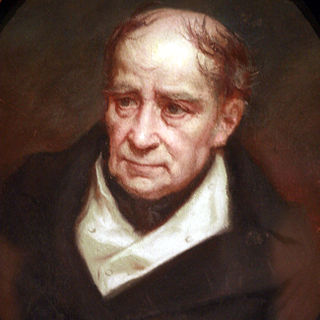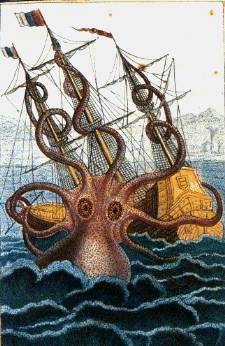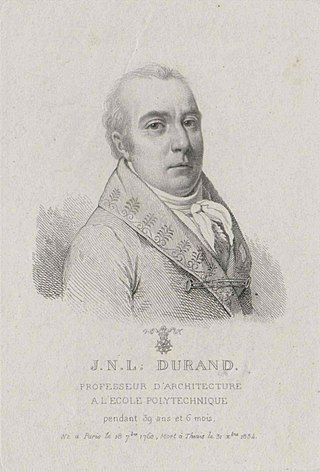
Józef Maria Hoene-Wroński was a Polish messianist philosopher, mathematician, physicist, inventor, lawyer, occultist and economist. He was born as Hoëné to a municipal architect in 1776 but changed his name in 1815 to Józef Wroński. Later in life he changed his name to Józef Maria Hoene-Wroński, without using his family's original French spelling Hoëné. At no point in his life, neither in Polish or French, was he known as Hoëné-Wroński; nor was the common French transliteration, Josef Hoëné-Wronski, ever his official name in his native Poland.

Élie-Abel Carrière was a French botanist, based in Paris. He was a leading authority on conifers in the period 1850–1870, describing many new species, and the new genera Tsuga, Keteleeria and Pseudotsuga. His most important work was the Traité Général des Conifères, published in 1855, with a second, extensively revised edition in 1867.

Alexandre Brongniart was a French chemist, mineralogist, geologist, paleontologist, and zoologist, who collaborated with Georges Cuvier on a study of the geology of the region around Paris. Observing fossil content as well as lithology in sequences, he classified Tertiary formations and was responsible for defining 19th century geological studies as a subject of science by assembling observations and classifications.

Gongylus gongylodes, also known as the wandering violin mantis, ornate mantis, or Indian rose mantis, is a species of praying mantis in the family Empusidae. Characterized by extremely slender limbs with large appendages, it is not a particularly aggressive species and often kept as a pet. The mantis is especially known for swaying its body back and forth to imitate a stick flowing in the wind. It primarily feeds on flying insects. Its native range is in southern India and Sri Lanka. It can reach up to 11 cm (4.3 in) long. The males of the species are capable of flight. They are a communal species, in that they are able to live and breed in large groups, without unnecessary cannibalism. Adult females are about 10cm and adult males are about 9 cm.

Pierre Denys de Montfort, also sometimes spelled "Pierre Dénys de Montfort", (1766–1820) was a French naturalist, in particular a malacologist, remembered today for his pioneering inquiries into the existence of the gigantic octopuses. He was inspired by a description from 1783 of an eight-metre long tentacle found in the mouth of a sperm whale.

Jean-Baptiste Descamps was a French writer on art and artists, and painter of village scenes. He later founded an academy of art and his son later became a museum curator.

Jean-Nicolas-Louis Durand was a French author, teacher and architect. He was an important figure in Neoclassicism, and his system of design using simple modular elements anticipated modern industrialized building components. Having spent periods working for the architect Étienne-Louis Boullée and the civil engineer Jean-Rodolphe Perronet, he became a Professor of Architecture at the École Polytechnique in 1795.
The Treaty of Huế, concluded on 25 August 1883 between France and Vietnam, recognised a French protectorate over Annam and Tonkin. Dictated to the Vietnamese by the French administrator François-Jules Harmand in the wake of the French military seizure of the Thuận An forts, the treaty is often known as the 'Harmand Treaty'. Considered overly harsh in French diplomatic circles, the treaty was never ratified in France, and was replaced on 6 June 1884 with the slightly milder 'Patenôtre Treaty' or 'Treaty of Protectorate', which formed the basis for French rule in Vietnam for the next seven decades.

Ictinogomphus is a genus of dragonflies in either the family Gomphidae or Lindeniidae. They are medium to large, yellow and black with clear wings. Species occur in Africa, Asia and Australia.

Saint-Mars-d'Égrenne is a commune in the Orne department in north-western France.

Bulinus truncatus is a species of air-breathing freshwater snail with a sinistral shell, an aquatic pulmonate gastropod mollusk in the subfamily Bulininae of the family Bulinidae, the ram's horn snails and the like.
Nicolas Desportes (1718–1787) was a French painter, specialising in representations of animals and hunting scenes.

Tritoniopsis elegans is a species of dendronotid nudibranch. It is a marine gastropod mollusc in the family Tritoniidae and is found in the western Indo-Pacific. It was first described by the French naturalist Jean Victoire Audouin in 1826, the type specimen being found in the Red Sea.

Alvania dorbignyi is a species of minute sea snail, a marine gastropod mollusk or micromollusk in the family Rissoidae.

Antoine-Jacques Roustan was a Genevan pastor and theologian, who engaged in an extensive correspondence with Jean-Jacques Rousseau. Unlike Rousseau, he believed that a Christian republic was practical - that the Christian religion was not incompatible with patriotism or republicanism.

The Lives of Flemish, German, and Dutch painters refers to a compilation of artist biographies by Jean-Baptiste Descamps published in the mid 18th-century that were accompanied by illustrations by Charles Eisen. The list of illustrations follows and is in page order by volume. Most of the biographies were translated into French from earlier work by Karel van Mander and Arnold Houbraken. The illustrated portraits were mostly based on engravings by Jan Meyssens for Het Gulden Cabinet and by Arnold and Jacobus Houbraken for their Schouburgh, while the work examples engraved in the margins of the portraits were mostly based on engravings by Jacob Campo Weyerman.

Pierre Pélissier was a pioneer for deaf education in France in the mid-19th century. He was born September 22, 1814, in Gourdon, Lot, and died April 30, 1863. He was a teacher of the deaf and also wrote a dictionary for an early form of French Sign Language in 1856. He studied first at Rodez and Toulouse, under Abbot Chazottes. He then became a teacher at the School of the Deaf in Toulouse. He was the deputy secretary of the Central Society for Deaf Mutes in Paris in 1842. At 29, in 1843, he went to Paris to teach at the Imperial School for Deaf Mutes, until his death.

The Neirab steles are two 8th-century BC steles with Aramaic inscriptions found in 1891 in Al-Nayrab near Aleppo, Syria. They are currently in the Louvre. They were discovered in 1891 and acquired by Charles Simon Clermont-Ganneau for the Louvre on behalf of the Commission of the Corpus Inscriptionum Semiticarum. The steles are made of black basalt, and the inscriptions note that they were funerary steles. The inscriptions are known as KAI 225 and KAI 226.

Gongylus trachelophyllus is an praying mantis in the family Empusidae which is characterized by extremely slender limbs with large appendages.
Ba Ag Moussa was a Malian militant and jihadist.
















